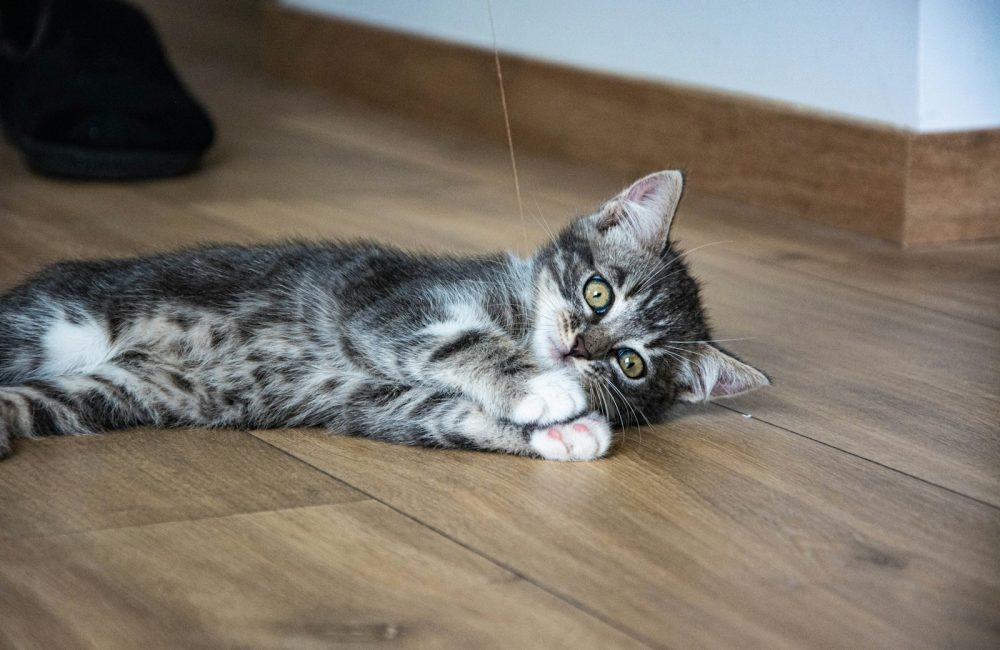If you’ve ever found your cat dropping its toys at your feet or even on your bed, you might have wondered why they do this. Is it a gift, a request to play, or something else entirely? This behavior, while seemingly simple, can be a complex form of communication from your feline friend. Understanding why your cat brings you its toys can deepen your bond and help you better meet your cat’s needs. Let’s explore the reasons behind this endearing behavior. Cats are fascinating creatures with a variety of behaviors that often leave us scratching our heads. One such behavior is when they bring you their toys, which can be interpreted in numerous ways. Let’s delve into some of the most common reasons cats engage in this behavior and how you can respond to it.
1. Instinctual Hunting Behavior
One of the primary reasons cats bring their toys to their owners is rooted in their natural hunting instincts. Cats are predators by nature, and even though your indoor cat may not need to hunt for its food, this instinct remains strong. When your cat brings you a toy, it’s mimicking the behavior of catching prey and presenting it to its pack, which in this case, is you.
Understanding the Hunting Instinct
In the wild, a mother cat will often bring back prey to her kittens, both to feed them and to teach them how to hunt. Similarly, when your cat brings you a toy, it could be an expression of this nurturing instinct. Your cat might see you as part of its family and is showing you what it has “caught.” This behavior is a compliment, indicating that your cat feels comfortable and bonded with you.
Nurturing Instincts in Domestic Cats
Even domesticated cats retain many behaviors of their wild ancestors. The act of “hunting” toys and bringing them to you is a testament to their deeply ingrained instincts. It’s a way of keeping their skills sharp, even if they never have to use them for survival. As cat owners, we can encourage this natural behavior by providing a variety of toys that mimic real prey, such as feather wands or small, plush mice.
2. Seeking Attention and Interaction
Cats are social animals, and despite their reputation for being independent, they often crave attention and interaction from their owners. Bringing you a toy can be your cat’s way of initiating playtime.
The Social Nature of Cats
Cats thrive on mental and physical stimulation, and play is an essential part of their daily routine. When your cat drops a toy at your feet, it’s likely asking you to engage in a game. This is particularly common in cats that are left alone for long periods or don’t have other pets to play with. By bringing you a toy, your cat is telling you that it’s time to have some fun together.
Encouraging Play and Interaction
To respond to this behavior, consider setting aside regular play sessions with your cat. Use interactive toys like laser pointers or feather teasers to engage your cat’s hunting instincts. Not only does this provide exercise, but it also strengthens your bond. Remember, a playful cat is usually a happy and healthy cat.
3. Sharing Their Success
Cats may also bring you their toys as a way of sharing their success. In the wild, after a successful hunt, cats might bring their prey back to their home base as a way of showing off their skills and sharing their catch.
Understanding the “Show and Tell”
Your cat’s toy might represent a successful “hunt,” and by bringing it to you, your cat is sharing its achievement with you. This behavior can be seen as a form of social bonding. By sharing its “prey,” your cat is reinforcing the bond between you and showing that it considers you part of its inner circle.
Acknowledging Your Cat’s Achievements
When your cat brings you a toy, take a moment to acknowledge it. Offer praise or a gentle pet to show you appreciate the gesture. This not only reinforces the behavior but also builds trust and confidence in your feline friend.
4. Practicing Hunting Skills
For many cats, toys are not just objects to play with—they are stand-ins for real prey. Bringing you a toy can be part of your cat’s natural behavior to practice hunting skills. This is especially true for younger cats or those with a high prey drive.
The Importance of Play for Skill Development
The act of catching, carrying, and delivering the toy is all part of a hunting sequence that would be used in the wild. When your cat engages in this behavior, it’s honing its hunting instincts and practicing important skills, even if it doesn’t need to use them for survival.
Encouraging Healthy Play Behavior
Encouraging this behavior by playing with your cat and using interactive toys can help satisfy its natural instincts and keep it mentally and physically stimulated. Rotate toys regularly to keep your cat engaged and interested. You can also hide toys around the house to mimic the unpredictability of real prey.
5. Offering a Gift or Tribute
Some cat owners interpret their cats bringing them toys as a gift or tribute. While it’s difficult to say definitively whether cats understand the concept of gifting in the same way humans do, this behavior can be seen as a form of social offering.
The Concept of Gifting in Cats
Your cat might bring you a toy as a way of strengthening the bond between you, similar to how some cats bring back prey to their owners. In this context, the toy represents something of value to your cat, and by offering it to you, your cat is showing its affection and loyalty.
Responding to Your Cat’s Gift
Whether or not your cat sees it as a “gift,” it’s clear that the behavior is meant to reinforce the connection between you and your pet. Show appreciation by acknowledging the “gift.” You might even consider returning the favor by engaging in a play session, which can be rewarding for both of you.
6. Seeking Comfort and Reassurance
Bringing a toy to you might also be a sign that your cat is seeking comfort and reassurance. Cats can form strong attachments to their toys, especially those that they’ve had since they were kittens.
The Role of Comfort Objects in Cats
These toys can provide a sense of security, much like a child’s favorite blanket or stuffed animal. When your cat brings you a toy, it might be seeking comfort from you or looking for reassurance that everything is okay. This behavior is often seen in cats that are feeling anxious or stressed, as they may turn to their toys and their owners for comfort.
Providing Reassurance to Your Cat
If you notice this behavior, it’s important to provide reassurance to your cat. Spend some quiet time with your feline friend, perhaps petting or talking softly to them. Consider evaluating any environmental factors that might be causing stress, such as changes in routine or the introduction of new pets or people.
7. Other Possible Interpretations
While the above reasons are some of the most common interpretations of this behavior, each cat is unique and may have its own reasons for bringing you toys. Here are a few other possibilities:
Habitual Behavior
Some cats may develop the habit of bringing toys simply because it’s part of their daily routine. This can occur if the behavior has been previously rewarded or positively reinforced, even unintentionally.
Exploring Boundaries
Kittens and younger cats, in particular, may engage in this behavior as a way of exploring boundaries and testing their environment. By bringing you a toy, they may be trying to gauge your reaction and learn more about their relationship with you.
Practical Tips for Engaging with Your Cat
- Regular Playtime: Dedicate time each day for interactive play. This not only helps with exercise but also fulfills your cat’s need for companionship.
- Toy Variety: Offer a variety of toys to keep your cat stimulated. Rotate them periodically to maintain interest.
- Positive Reinforcement: When your cat brings you a toy, respond positively to encourage this behavior. A simple “good kitty” or a gentle pet can suffice.
- Environmental Enrichment: Ensure your cat has a stimulating environment. Cat trees, scratching posts, and puzzle feeders can provide additional mental and physical stimulation.
- Observe and Adapt: Pay attention to your cat’s preferences and adapt your interactions accordingly. Some cats may prefer solitary play, while others thrive on human interaction.
Cats are complex creatures with behaviors that can sometimes be puzzling. However, by understanding the reasons behind their actions, we can create a more harmonious and fulfilling relationship with them. The next time your cat brings you a toy, consider what it might be trying to communicate and take it as an opportunity to connect with your feline friend on a deeper level.






